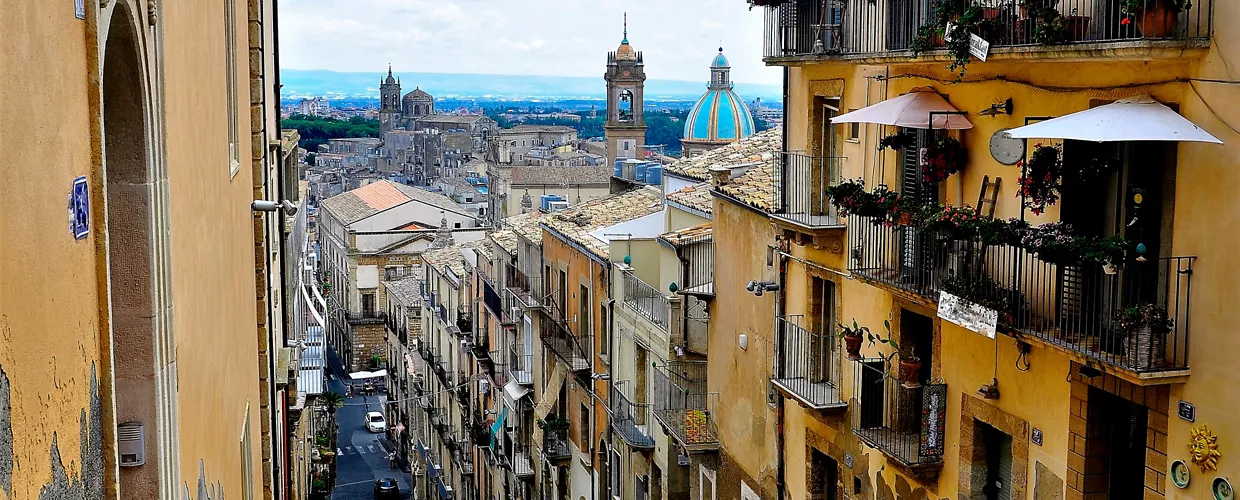This content was automatically translated. View the original text.

Overview
Among the ceramic towns of Sicily, Caltagirone is the most renowned: the origins of the local artistic activity may date back even to the classical era, and certainly to the Arab period. Creative majolica and ceramic decorations adorn many sites in the 'magnificent city', a title given it by Emperor Charles V in 1528, and are its main attraction. Even today, about a hundred Caltagirone potters still exhibit tableware, wall plates, and vases of all shapes and sizes, including the original bucche with owl-shaped lids, in the shops in the centre.
The MACC, Caltagirone Museum of Contemporary Art, housed in the former Women's Hospital, is dedicated to the local ceramics. A historical presentation of the island's production is offered by the Regional Ceramics Museum, which can be reached by passing through the 18th century 'little theatre', an example of the use of ceramic decoration in architecture. A grandiose wall panel, with tiles depicting the scene of Castel di Judica's victory over the Arabs, catches the attention of visitors to the Sturzo Gallery, a mid-20th-century town meeting place.
The historical centre retains medieval traces, despite the Baroque reconstruction after the devastating 1693 earthquake that earned the city UNESCO World Heritage status. The most celebrated attraction here is still the 17th-century staircase, which ascends up 142 steps to the church of Santa Maria del Monte with great perspective impact. It is covered with majolica tiles produced in 1954 by the Institute of Ceramic Art of Caltagirone, with motifs based on traditional historical models.
95041 Caltagirone CT, Italia